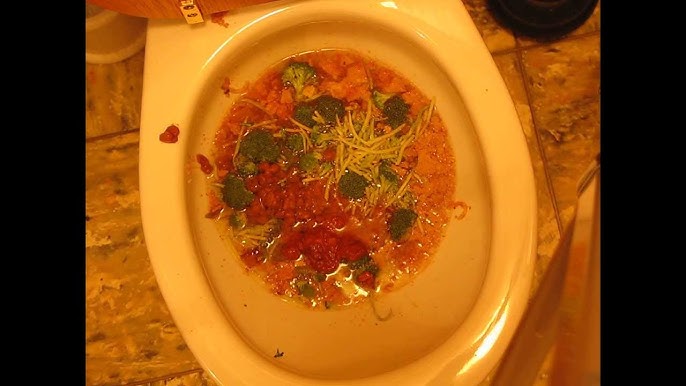How do you actually feel in relation to Flushing Food Down the Toilet??

Introduction
Lots of people are often confronted with the dilemma of what to do with food waste, particularly when it pertains to leftovers or scraps. One common inquiry that emerges is whether it's okay to purge food down the bathroom. In this post, we'll look into the reasons individuals might consider purging food, the effects of doing so, and alternate approaches for proper disposal.
Reasons that people could take into consideration flushing food
Lack of recognition
Some individuals may not know the prospective injury brought on by flushing food down the commode. They might incorrectly think that it's a safe practice.
Ease
Flushing food down the bathroom might feel like a quick and very easy option to disposing of unwanted scraps, especially when there's no nearby trash can readily available.
Idleness
In some cases, people might merely select to flush food out of large laziness, without taking into consideration the consequences of their activities.
Effects of flushing food down the bathroom
Ecological influence
Food waste that winds up in rivers can contribute to pollution and injury aquatic environments. Furthermore, the water made use of to flush food can stress water resources.
Pipes problems
Flushing food can bring about blocked pipelines and drains, triggering costly plumbing repair services and troubles.
Types of food that must not be flushed
Fibrous foods
Foods with coarse structures such as celery or corn husks can get tangled in pipes and trigger clogs.
Starchy foods
Starchy foods like pasta and rice can take in water and swell, causing obstructions in pipes.
Oils and fats
Greasy foods like bacon or food preparation oils ought to never be flushed down the bathroom as they can solidify and create obstructions.
Proper disposal techniques for food waste
Using a garbage disposal
For homes outfitted with waste disposal unit, food scraps can be ground up and flushed through the pipes system. Nevertheless, not all foods appropriate for disposal in this way.
Recycling
Certain food packaging materials can be recycled, reducing waste and lessening ecological influence.
Composting
Composting is an environment-friendly means to dispose of food waste. Organic products can be composted and used to enrich dirt for gardening.
The value of correct waste administration
Minimizing environmental harm
Proper waste monitoring techniques, such as composting and recycling, aid decrease contamination and maintain natural resources for future generations.
Shielding plumbing systems
By avoiding the practice of flushing food down the bathroom, property owners can prevent pricey pipes repair services and maintain the integrity of their plumbing systems.
Final thought
In conclusion, while it might be tempting to purge food down the bathroom for convenience, it's important to understand the possible consequences of this activity. By taking on correct waste administration methods and taking care of food waste sensibly, individuals can add to healthier pipes systems and a cleaner environment for all.
FLUSH FOOD DOWN THE TOILET?
FLUSHING FOOD CAN CAUSE BLOCKED DRAINS IN YOUR HOME
All of the plumbing fixtures in your home are connected to the same sewer pipe outside of your home. This outdoor sewer pipe is responsible for transporting all the wastewater from your home to the Council sewer mains. Even small pieces of food that go down the kitchen sink can cause problems for your sewer. It should therefore be obvious that flushing larger bits of food, such as meat, risks a clog in either the toilet itself or the sewer pipes. Flushing greasy food is even more problematic because oil coagulates when it cools, coating the interior lining of your pipes.
THE TOILET IS NOT A BIN
Food isn’t the only thing that people shouldn’t be flushing down the toilet. People use the toilet to dispose of all kinds of things such as tampons, makeup wipes, dental floss, kitty litter and even underwear. Water goes to great lengths to educate residents about the high costs and stress placed on wastewater treatment systems simply from people flushing the wrong stuff down the toilet. It costs taxpayers millions of dollars each year, and homeowners thousands in blocked drain repairs.
FLUSHING FOOD IS A WASTE OF WATER
Flushing food is a waste of our most precious resource - water. In June this year Level 1 water restrictions were introduced to protect water supply from drought conditions. Much of New South Wales continues to be affected by prolonged drought with recent figures revealing up to 97 per cent of the state remains in drought. Depending on whether you have a single or dual flush toilet, every single flush uses between five and 11 litres of water. In the current climate this is a huge amount of water to be wasting on flushing food that should be placed in the bin (or better yet, the compost).
https://www.jabplumbingsolutions.com.au/blog/can-you-flush-food-down-the-toilet

I'm very taken with and I am hoping you enjoyed reading the blog entry. If you please take a moment to distribute this article if you liked it. Thanks a lot for being here. Kindly visit our blog back soon.
Schedule A Free Estimate